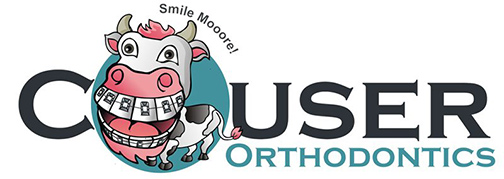What Is It?
Limited orthodontic treatment is intended to address a problem involving only one or a few teeth. Limited orthodontic treatment is often used in preparation for complex dental work like bridges or dental implants. It can be confined to the six front teeth or back teeth on the top, bottom or both. Generally the treatment time is 3 to 9 months with an average of 6 months.
Who Might Want It?
Minor orthodontic treatment has opened up the field of tooth movement to a greater number of people who previously would not have done anything at all. It is used to correct isolated problems, such as crowding (crooked teeth) or spacing (gaps), in one area of the mouth. It is particularly popular with those who have had comprehensive orthodontic treatment in the past and the teeth have started to drift. People of all ages and dental history are potential candidates for this conservative therapy. Our largest group of patients is adults who want to improve their smile without the time and financial commitment that is involved with full braces.
Can It Work For Me?
You could be an ideal candidate for this type of treatment. However, each situation has to be individually evaluated for the probability of a good outcome. If crowding is too severe, this treatment approach may not be practical. If opposing teeth don’t allow the preferred aesthetic alignment, this simple cosmetic modality might be inappropriate. That being said, many patients have been surprised and pleased with what we can accomplish with such a focused and basic realignment. To determine if you are a good candidate for limited orthodontic therapy, a comprehensive evaluation should be done. There is no fee for this simple consultation.
How Do You Do It?
Braces on a limited number of teeth, or clear plastic aligners (like Invisalign), are the most efficient way to do most limited orthodontic treatment. However, in certain situations a retainer may also be used. Minor tooth movement requires three conditions: space, force and time. There must be room for the tooth to move and space for it to move into. Pressure must be applied in the direction you want to move the tooth. Movement must be incremental over a number of weeks.
Advantages Of Limited Orthodontics
There is a shorter treatment time than normal braces or Invisalign.
These are more economical than regular braces or Invisalign.
If Invisalign or retainers are used they can be removed, they can be temporarily removed for important events such as photos, speeches or job interviews.
What Happens After The Treatment Is Complete?
As with conventional orthodontic treatment, relapse (teeth drifting back to where they were) has to be guarded against. A separate appliance is used for that. It can be either a fixed permanent wire bonded behind the teeth or a removable retainer that is worn at night.
What Does This Usually Cost?
Our fee depends on the nature of your problem and the anticipated time to complete the treatment. Typically much lower than comprehensive treatment.



